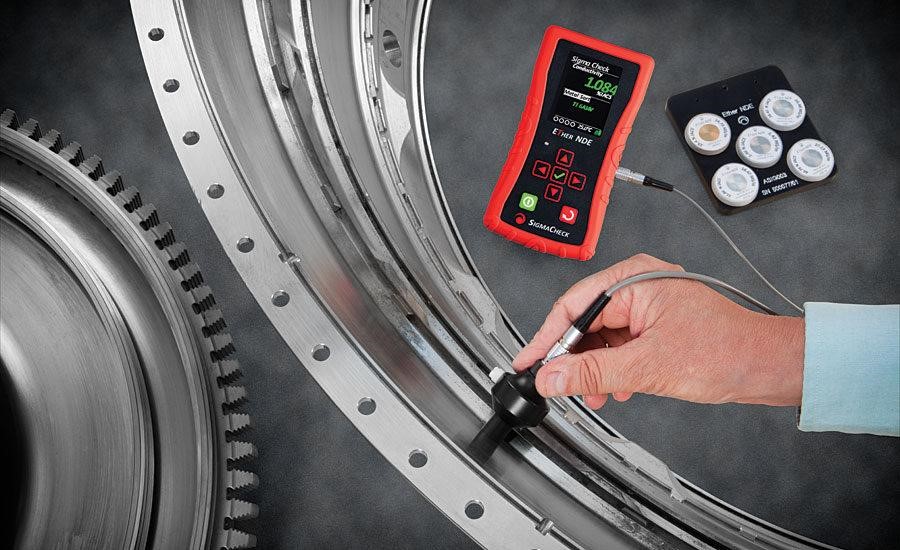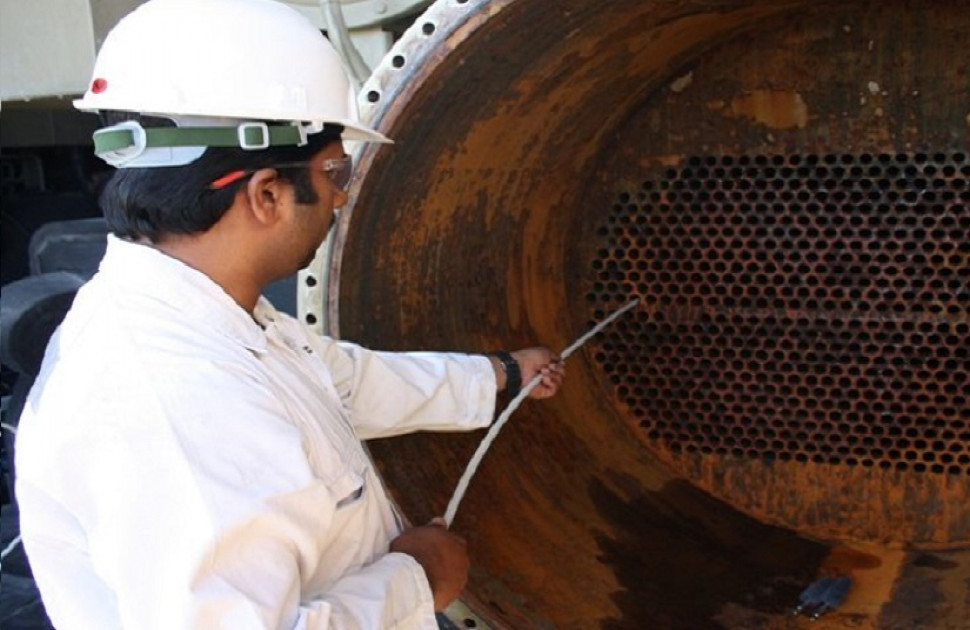Table of Content
- Applications of Eddy Current Testing
- Purpose of Eddy Current Testing
- Advantages of Eddy Current Testing
- Limitations of Eddy Current Testing
- Key Takeaways
In the world of non-destructive testing, eddy current inspection stands out as a versatile and powerful technique used to inspect a wide range of conductive materials. It permits examining the conductivity, thus the hardness, geometry, and chemistry of any material that is electrically conductive when it is brought into the vicinity of a coil.
Generally, Applications of Eddy Current Testing are used to detect porosity, voids, cracks, hardness, the density of the material, thickness, thread, and surface condition.
Dive into Eddy Current Testing - Your Comprehensive Guide Awaits!
Applications of Eddy Current Testing
Eddy Current Testing (Eddy Current NDT) includes various applications; here are some of the applications that are widely used.
1. Material Sorting
Electromagnetic sorting bridges and Ferrous segregation are some of the valuable tools for sorting steel that has been hardened. Conductivity meters can be used in sorting copper and aluminum alloys in both cases, i.e., hardness variation and compositional variation. A lot of concentration is required in order to ensure that the variation being inspected is the appropriate one.
For instance, the occurrence of a change in the conductivity of an aluminium alloy is due to a change in its composition or a change in its hardness. This particular method delivers a better classification of the properties that material holds than any other method used for sorting materials because eddy current fields permeate below the surface of the components.
2. Weld Testing
Eddy current testers with high frequencies have been used for a long time to identify cracks in ferrous welds. There is an advantage to executing this method, as it is capable of detecting cracks through paint layers. One drawback of this method is the high noise levels that result from the permeability changes that occur in the weld. This is one of the major applications of ECT.
3. Crack Detection

Eddy Current Testing Equipment for identifying cracks can be classified into two categories. The first one is a high-frequency instrument for detecting surface-breaking cracks in non-ferrous and ferrous components. The second one is a low-frequency instrument for inspecting subsurface cracks in non-ferrous components.
In ferrous materials, identifying the subsurface cracks is possible only when the materials are saturated magnetically to eliminate permeability impacts. This is a complicated procedure that is achievable with automated tube testing systems. Applications of Eddy Current Testing are widely used in detection.
In the Detection Procedure of Surface Cracks, eddy currents are too sensitive. High frequencies of the order of 2 MHz provide high resolution, but the probes are too small, and covering a vast surface area consumes a lot of time. Large probes are required for low-frequency crack detectors to enable favorable coil inductances.
The setting of the frequency is critical, and it is in the range of 10 Hz to 100 Hz, which depends on the depth of penetration needed. Phase sensing circuits are necessary because phase changes, rather than amplitude changes, have a significant impact on the subsurface eddy current fields.
4. Measurement of The Coating Thickness
The outstanding surface resolution of Eddy current testing makes it highly useful. Its application is seen in meticulously measuring the thickness of the coatings, whether metallic or paint, on the components.
5. Tube and Wire Testing
The automated eddy current testing systems are developed for examining bars, tubes, and wires at a speed of 3 m/s. After the operator calibrates the equipment by using a wire or tube with already known defects, the implemented test runs automatically, defenestrating defective pieces from the production line or marking them with the help of paint.
Eddy current testing of tubes is a critical aspect of non-destructive testing. The actual eddy current test instrumentation can appear to be an insignificant part due to the mechanical handling equipment for the test pieces that becomes complicated. There is an increase in costs because of the facilities required for magnetic saturation and the demagnetization of ferrous wires and tubes. The continuous test speeds and differential coils enable the modulation of the test signals with speed, and then it filters to remove the noise.
But sadly, when it comes to using differential coils, it becomes possible for the tubes (which comprise consistent defects over their full length) to pass through the eddy current system without any detection. Also, due to the edge effects, the tube ends cannot be identified. Moreover, the extrusion flaws along the center of the bars cannot be identified because the eddy current field from an encircling coil remains at zero intensity, which is at the center of a strong cylinder.
Purpose of Eddy Current Testing
It serves a critical role in the realms of material inspection and quality assurance. This Electromagnetic Testing Technique is specifically designed to detect flaws, defects, cracks, and other irregularities in conductive materials without causing any damage to the tested object.
The primary purpose of ECT is to ensure the structural integrity and reliability of components across various industries, including aerospace, automotive, manufacturing, and energy.
Advantages of Eddy Current Testing
In the world of non-destructive testing, eddy current testing stands out as a versatile and powerful technique used to inspect a wide range of conductive materials. With numerous specialized Companies offering ECT Services, here are a few advantages to consider.
1. High Sensitivity and Precision
Eddy current testing offers an unparalleled level of sensitivity, making it capable of detecting even the minutest cracks or imperfections in conductive materials. Its high precision ensures that potential issues are identified early, minimising the risk of catastrophic failures.
2. Non-Destructive Nature
One of the most significant advantages of ECT is its non-destructive nature. Unlike some testing methods that may cause damage during the inspection process, it allows for a thorough examination without altering the material's properties.
3. Rapid Inspection
Eddy current testing is known for its efficiency in rapidly assessing large volumes of materials. This speed makes it an ideal choice for industries where time-sensitive inspections are crucial, such as manufacturing or maintenance operations.
4. Versatility
From Inspecting Heat Exchanger Tubes for Corrosion to detecting surface cracks in aircraft components, Eddy Current Testing proves its versatility across a multitude of applications. It can be adapted to various geometries and materials, further expanding its utility.
5. Cost-Effectiveness
By enabling early detection of defects, ECT contributes to cost savings in the long run. Timely identification of issues allows for targeted repairs or replacements, preventing expensive downtime or equipment failures.
Limitations of Eddy Current Testing
While ECT offers numerous benefits, it's essential to acknowledge its limitations to ensure appropriate utilisation and interpretation of results. Here are the major limitations of Eddy Current Testing:
1. Conductivity Dependency
ECT is most effective on materials with high electrical conductivity. Inspecting materials with low conductivity may yield less accurate results, requiring careful consideration of the material's properties.
2. Depth Limitations
The depth to which eddy current testing can penetrate and effectively detect flaws is limited. Deeper defects may go undetected, necessitating supplementary NDT Testing Methods for comprehensive evaluation.
3. Surface Condition Influence
Surface conditions, such as roughness or curvature, can impact the accuracy of ECT results. Proper preparation and calibration are crucial to account for these variations.
4. Skilled Operator Requirements
Interpreting eddy current testing results demands a certain level of expertise. Skilled operators are required to assess the data accurately, minimising the risk of misinterpretation.
5. Complex Data Analysis
The data generated by ECT can be complex, requiring specialised software and analysis techniques for meaningful interpretation. Adequate training and resources are necessary for efficient data processing.
Key Takeaways
- Eddy Current Testing is a powerful tool that plays a vital role in ensuring the integrity and reliability of conductive materials.
- High sensitivity and rapid inspection capabilities position ACT as a valuable asset across various industrial applications. However, it's crucial to be aware of its limitations, such as its dependency on material conductivity and depth constraints.
- By harnessing the applications of ECT while mitigating its limitations through careful planning and expert execution.
- Industries can benefit from enhanced quality control, improved safety, and increased cost-effectiveness.
- As a leading authority in Non-destructive Testing, we remain committed to providing you with the latest insights and expertise to drive innovation and excellence in your operations. For more details, check out OnestopNDT.
References:
1. Aluminium Metal Knowledge
2. IndiaMART
3. Quantum Mold & Engineering, LLC









